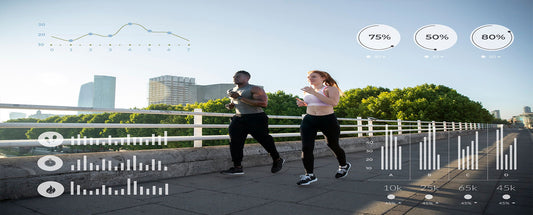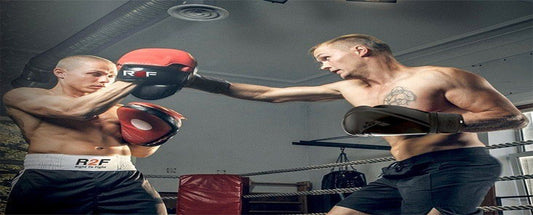Knowing which muscle groups to focus on might be tough for individuals who are new to exercise. Muscles are the foundation of physical strength and fitness, and knowing which muscles to target is critical for getting the desired outcomes.
To maintain good health, the Dietary Guidelines for Americans 2015-2020 recommend practicing strength training activities at least twice a week. The primary goal of strength training is to target the appropriate muscles.
While the concept of strength education is easy enough – pressure your muscle groups over time to lead them to more potent – there are a plethora of various muscular tissues that want to be taken into consideration when structuring an effective recurring. It facilitates to breakdown of the body into main areas, consisting of the palms, legs, core, chest, and back, with every containing one or more particular muscle companies that have to be worked upon as a part of any complete application.
With this in thoughts, it's miles vital for novices to apprehend which precise muscle corporations they must goal if they need to get maximum effects from their efforts. In precise, exercises tailored around running out the top body (hands and shoulders), decreasing frame (hips and legs), and center are important for constructing power and balance at some point of the whole frame.
Furthermore, beginning exercisers must be aware of muscular imbalances between opposing muscle groups (for example, biceps/triceps), which can lead to postural difficulties over time if not handled properly.
As a beginner, you should be aware of how to target your particular muscle area through a variety of exercises. In this essay, we'll go over the muscle groups you should focus on as a beginner.
The Significance of Understanding Muscle Groups:
As a workout newcomer, it might be tempting to dive right in and think that whatever muscles you have will get you through the workout. However, recognizing muscle types is essential for any training plan. Knowing which muscles are engaged in different workouts allows you to target the muscles that are lagging.
1. Lowers the Risk of Injury:-
Understanding the muscle groups being worked on, regardless of the activity you pick, may help you take your workout to the next level and gain muscle with less effort and injury risk.
2. Prevents Muscle Imbalances:-
Understanding which muscles are involved in specific training motions will help you prevent workout-induced muscle imbalances, which not only look ugly but can also be quite uncomfortable. Nobody wants to work out their arms lopsidedly without even touching their legs; understanding muscular anatomy allows you to prioritize different training muscle parts so that they may be treated in a balanced manner.
3. Effective Workout Results:-
Mastering exercise muscle groups might help you get the most out of your workouts. Different training muscles target different sections of your body, thus exercises designed for certain muscle groups will provide varied outcomes.
For example, if you want to tone your arms, you need to learn about the three tricep muscle heads and how to isolate them. Arm curls alone will not go you very far; you'll need an exercise that isolates that set of muscles and is performed with proper form to grow the muscles you need for your objective.
Basic Body Muscle Groups:-

Let's take a closer look at the fundamental muscle groups in the body and understand their importance.
1. Abdominal:-
The abdominal training groups are divided into three divisions, each with its unique combination of muscles. Some examples are:
- Rectus abdominis, which extends from your ribcage to your pubic bone and provides you the famed "six-pack" image.
- The transverse abdominis provide core stability by wrapping over the sides and waist, whereas the obliques stabilize while twisting side to side.
Overall, these muscle groups provide strength, stability, and power for dynamic actions like bending and twisting, making them crucial for good exercise.
2. Biceps:-
These are the muscles on top of your upper arm. The bicep muscle group consists of four muscles:
- Biceps brachii have a short head.
- Biceps brachii muscle has a long head.
- Coracobrachialis.
- Brachialis muscles.
While all four are crucial for strength training, when combined, they form a wonderful package that allows us to lift large weights while looking great in our sleeveless shirts.
3. Calves:-
Calves can be classified into two muscle groups:
- The gastrocnemius muscle extends the foot.
- The soleus muscle helps with plantar flexion (pointing the feet).
These two muscle groups work together to generate movement and stability in the ankle joint. The importance of calf muscles cannot be overstated; without them, we would struggle with daily tasks like walking and running.
4. Deltoids:-
The deltoid muscle group, located around the shoulders, is responsible for tasks such as arm lifting and shoulder rotation. These muscles form and define your arms while also allowing you to flex them impressively. They not only provide our upper arms more power and strength, but they also allow for greater stability during high-speed motions.
5. Forearm:-
The forearm muscle group consists of multiple muscle groups positioned between the elbow and wrist joints, making them essential for arm mobility. The muscle group has a role in some of the most fundamental human functions, such as writing, typing, brushing teeth, opening doors, lifting weights, and performing any other arm-intensive action.
6. Gluteal:-
Gluteal muscles are muscle groups in the lower body that consist of some of the largest muscles in the body. They comprise such muscular groups as
- Gluteus minimus.
- Gluteus medius.
- Gluteus Maximus
All of these factors influence our leg and hip movements significantly. In terms of daily functioning, gluteal muscles enable us to perform various routine movements, such as walking, jogging, and even sitting in a chair, with ease.
7. Hamstring:-
The hamstring muscles are placed in the rear of the upper leg, beneath the gluteal muscles. These muscular groups are composed of:
- Semitendinosus
- Semimembranosus
- The biceps femoris muscle
All of these muscles work together to greatly improve our mobility. They help with actions including walking, running, bending, and extending our legs. Furthermore, they allow us to quickly initiate and halt any leg motions caused by muscular contraction as necessary.
8. Lastissimus Dorsi:-
The Latissimus Dorsi muscle, also known as the "lats" muscle, is actually a muscular group located beneath your armpit. It is also the broadest muscle in your body. You may feel it when you spread your arms wide; it is the muscle that allows your back to be wider. Its relevance stems from its role in antagonistically stabilizing the shoulders and arms, allowing the body to balance itself.
9. Pectorals:-
Chest muscles (also known as pectoral muscles) are a group of two primary muscles located in the chest area. They are placed in the front of your ribcage, running from top to bottom and meeting at the sternum. The chest muscular groups are:
- Pectoralis major.
- Pectoralis minor.
- Serratus Anterior
The pectoralis major is the principal muscle that governs mobility in both the arm and the shoulders, while the pectoralis minor serves to keep your arms close to your chest.
10. Quadriceps:-
The quadriceps are positioned in the front upper legs, above the knees. This muscle group is extremely significant because it aids in leg extension, knee flexion, and stabilization when moving.
11. Trapezius:-
The trapezius muscle is an important muscle group that is frequently underestimated; it extends from the back of your neck down to and through your shoulder blades. This muscle workout group allows you to shrug your shoulders while also moving them in different directions.
Having strong trapezius muscles is beneficial for everyday movements like lifting a heavy bag or reaching for something high on a shelf, but it can also help you improve your form during strength exercises or maintain your posture and prevent slouching when working out at the gym.
12. Triceps:-
The triceps muscle group is placed in the back of your upper arm and is vital for muscle workouts. As the name says, it is made up of three muscle heads:
- Long
- Lateral
- Medial
With correct exercise, these muscles can provide incredible effects, ranging from enhanced power and energy output to a more toned appearance.
Tips for Before Strength Training:-
Before going into strength training, it's vital to learn a few tips and go through a structured approach. This will help you get adjusted to the routine and achieve efficient results.
1. Begin with Bodyweight:-
When beginning out, use your own bodyweight as the primary driver. Not only can you get a good strength workout without using any equipment, but it's also an excellent approach for novices to understand the foundations of muscle training. Bodyweight workouts include all of the major muscle action patterns that are necessary for muscle building and permanent muscle gains.
2. Do not Forget to Warm up:-
As a beginner, understanding why it is vital to warm up before working out can make a huge impact. Warming up prepares your muscles and joints for an intense exercise session.
It stimulates your blood flow and begins to synchronize your body and mind, assisting you in gaining motivation while allowing your muscles and joints to function properly. In short, warming up is similar to priming your engine: it prepares both your body and your mind for what comes next.
3. Make a Routine:-
Creating a routine is all about scheduling. Aim for two to three days each week and include total-body training. This means that each workout should include a variety of exercises, including lower-body work, core activities, and upper-body exercises, to ensure that muscle is built throughout the body. This gives you the opportunity to train evenly in all areas, developing strength that will benefit your entire health and fitness goals.
4. Hit the weights:-
When it comes to becoming in shape, start with your bodyweight. Sure, the old-fashioned push-up can help you stretch out your muscles and get into the groove, but if you want to bulk up, there's just one place to go: the weights.
Then, once you've gained some experience, start lifting weights! Investing in a pair of dumbbells can provide unlimited options for advancement and allow you to truly focus on certain areas of muscle growth.
5. Practice the same moves every day:-
Sticking to the same fundamental workout moves may sound dull, but as the saying goes, if it isn't busted, don't fix it. After all, great outcomes come from repeated efforts and progressive overload, which increases both resistance and the amount of reps as you gain strength. It is not only an excellent approach to develop a firm foundation of fitness and strength, but it also allows you to improve your motions and achieve precise form. Complexity is not always better!
6. Know When to Take Rest Days:-
We've all experienced the achy and fatigued feeling the morning after an exercise session. But don't worry, this is completely natural - it's the body's reaction to the microscopic tears you caused in your muscles when strength training.
A little stiffness is normal, but don't go too far - if you're so horribly sore that you can't work out for several days, you may be overdoing it! Better take a break and allow your body heal before returning to work hard the following week!
Weight Training for Certain Muscle Groups:-
As previously said, each workout targets a distinct muscle group. Here are some workouts for the major muscular groups.
1. Crunches (Abs):-

- Sit on the floor, feet flat on the ground, knees bent.
- Cross your fingers behind your head.
- Raise your upper body gently, until your shoulders are off the ground. Now you should feel your abs contracting.
- Then return to the earth.
- Do 12-15 repetitions over 2-3 sets.
2. Barbell Curl (Biceps):-

- Begin by verifying that the weight of the barbell is appropriate for you, then position yourself in front of it with your feet shoulder width apart.
- Remember to keep your hands shoulder width apart and palms facing up while gripping the bar.
- Start by bending your elbows and bringing the barbell to your chest.
- Avoid moving your upper arms during this activity and ensure that you slowly lower them after each rep.
- For best results, aim for 10-12 reps over 2-3 sets.
3. Military Press (Deltoids):-

- Starting with the barbell, adjust it to just below shoulder height while standing.
- Then load up the desired weight.
- Then sit down on the bench, unrack the weight with a pronated grip, and take a deep breath before starting your rep!
- Brace yourself, tuck your chin, and lower the bar to the top of your chest.
- Using the energy from your inhalation and exhale, press the bar back out to lockout.
- Perform 10-12 repetitions throughout 2-3 sets.
4. Leg Curls (Hamstrings):-

- Adjust the weight properly.
- Begin by reclining on the machine, face down, and placing your legs under the bar.
- Then, bend your legs at the knees and bring your feet near to your back.
- Once you've reached this point, slowly lower them back until they're level with where you started.
- Make sure to perform 10-12 repetitions and 2-3 sets.
5. Bench Press (Pectorals):-

- Begin by placing the required weight of the barbell on a bench press stand and lying down comfortably on the bench.
- When you're ready, pull off the barbell with a shoulder-width hold, keeping your back and glutes firm.
- Lower it to your chest and stretch your arms while you push up all the way, then slowly return it to your chest.
- For optimal results, repeat this for 10-12 reps over 2-3 sets.
6. Barbell Squats (Quadriceps):-

- Stand with a barbell on the back of your shoulders.
- Then bend down from the knees and bring your thighs parallel to the ground.
- Remember to maintain your back straight the entire time! Wearing a weightlifting belt throughout this workout can be beneficial.
- As you carefully rise back up, feel free to push yourself by doing 8-10 reps, followed by 2-3 sets.
7. Straight Bar Pushdown (Triceps):-

- Stand in front of a cable machine that has a straight bar attached. Hold the bar with your palms toward the floor.
- Bring your elbows to the sides and push the bar down to the ground, holding them in position.
- Return the arms to their original position carefully.
- Perform 10-12 repetitions throughout 2-3 sets.
To summarize, the best course of action for beginning athletes is to concentrate their efforts on the key muscle groups. These include the chest, back, shoulders, arms, and legs. When first starting out, it is critical to understand how each muscle group interacts to build a balanced body.
This can be accomplished by completing workouts that target each specific muscle group, as well as compound exercises that train multiple muscles at once. Furthermore, good form and technique are essential for avoiding injury, so novices may benefit from consulting with a professional trainer or coach to ensure they are executing their workouts properly.



